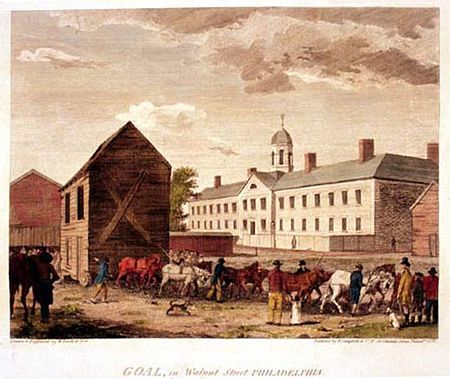Walnut Street Prison

Walnut Street Prison was a city jail and penitentiary house in Philadelphia, Pennsylvania, from 1790 to 1838. Legislation calling for establishment of the jail was passed in 1773 to relieve overcrowding in the High Street Jail; the first prisoners were admitted in 1776. It was located at Sixth and Walnut Streets, where it acquired its original name Walnut Street Jail. The penitentiary house, built in 1790, is considered to be the first in the United States, as it was built to use individual cells and work details. The word "penitentiary" came from the Pennsylvania Quakers' belief in penitence and self-examination as a means to salvation. This was made a new and permanent form of combating crime through the practice of solitary confinement, which was later adopted at the Eastern State Penitentiary.
Excerpt from the Wikipedia article Walnut Street Prison (License: CC BY-SA 3.0, Authors, Images).Walnut Street Prison
Walnut Street, Philadelphia Center City
Geographical coordinates (GPS) Address Nearby Places Show on map
Geographical coordinates (GPS)
| Latitude | Longitude |
|---|---|
| N 39.947 ° | E -75.147 ° |
Address
Polish American Cultural Center
Walnut Street 308
19106 Philadelphia, Center City
Pennsylvania, United States
Open on Google Maps









